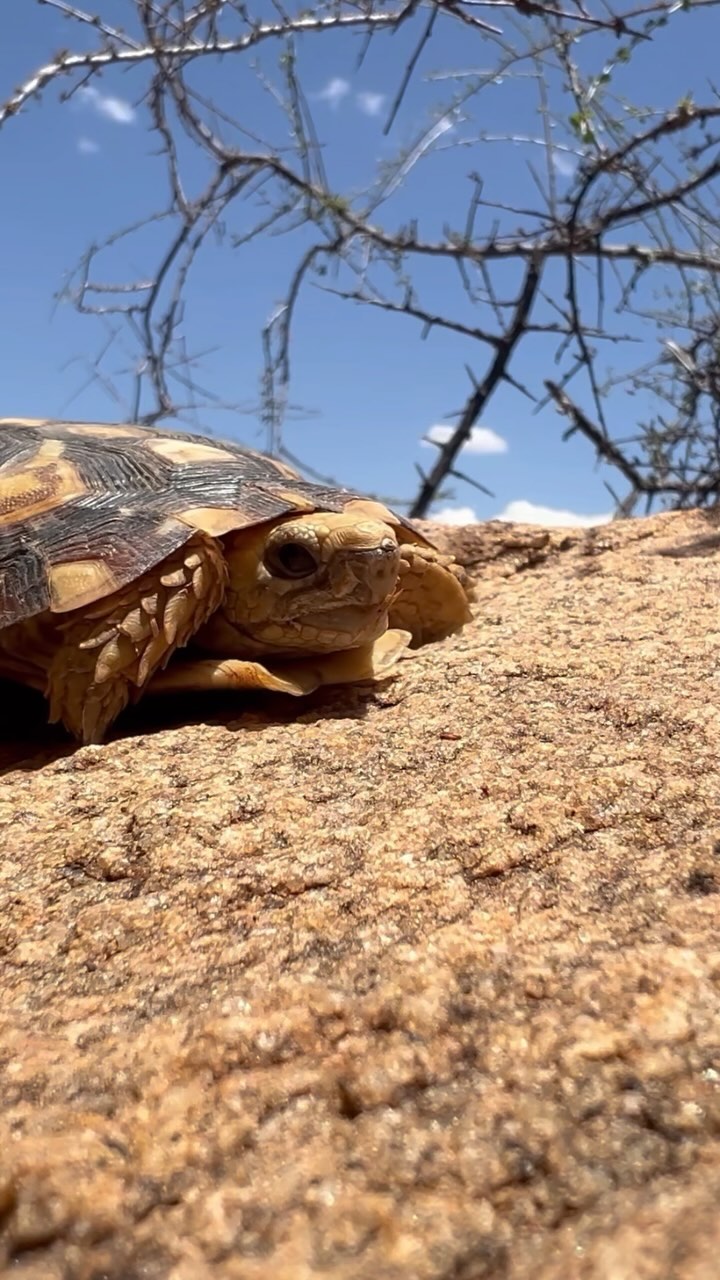– The distinctive anatomy and adaptations of Pancake Tortoises and their survival strategies.
– The significance of National Flapjack Day in raising awareness about preserving Pancake Tortoises.
– Efforts by conservation organizations like Turtle Survival Alliance to protect and study Pancake Tortoise populations.
– The collaboration between local Kenyan wildlife institutions and international conservation groups in Pancake Tortoise research and preservation.
– The importance of habitat preservation and the challenges faced by the Pancake Tortoise in the wild.
The Pancake Tortoise (Malacochersus tornieri) is a remarkable creature that captivates the interest of wildlife enthusiasts and zoologists alike. Known for its flattened carapace, this agile reptile exhibits a suite of adaptations that allow it to thrive in its rocky habitat in parts of Kenya and Tanzania. On National Flapjack Day, not only do we celebrate a beloved breakfast treat, but we also cast a spotlight on these fascinating tortoises, drawing attention to their survival challenges and the conservation efforts necessary to secure their future.
Anatomy and Adaptations of Pancake Tortoises
The Pancake Tortoise boasts a flattened, flexible shell that differentiates it from its more dome-shaped relatives. This unique morphology gives the tortoise a survival advantage; it can maneuver into narrow crevices between rocks, a strategy that thwarts predators. Once wedged within these spaces, Pancake Tortoises can inflate their lungs, causing their body to press tightly against the crevice walls, effectively locking them in place and making extraction by predators near impossible. This form of passive defense is an adaptation highlighting the evolution of the Pancake Tortoise’s specialized niche.
National Flapjack Day and Pancake Tortoise Awareness
National Flapjack Day presents a prime opportunity to educate the public on the plight of these intriguing animals. As their habitats face encroachment and fragmentation due to human activities, the Pancake Tortoise’s numbers are dwindling. Conservationists can draw parallels between the beloved food item and the animal’s characteristic shell by associating these tortoises with a day celebrating pancakes. This marketing approach can stimulate public interest and support for Pancake Tortoise preservation initiatives.
Conservation Efforts by Turtle Survival Alliance
Protecting the Pancake Tortoise is a priority for conservation groups such as the Turtle Survival Alliance (TSA). The TSA partners directly with organizations in Kenya, engaging in field research to discover and document previously unknown colonies of Pancake Tortoises. By expanding knowledge of their distribution and population dynamics, conservationists can devise more effective strategies for protecting these tortoises in their natural habitats.
Collaboration Between Kenyan Wildlife Institutions and International Groups
The union of local and international expertise is crucial for the Pancake Tortoise’s survival. In Kenya, partnerships have been forged between the TSA, the Lewa Wildlife Conservancy, the National Museums of Kenya, and the Kenyan Wildlife Service. These collaborations ensure a comprehensive approach to conservation, combining local insights and respect for community traditions with global resources and scientific rigor. These partnerships enable research and practical conservation measures, such as anti-poaching patrols and habitat restoration projects.
Habitat Preservation and Challenges
The preservation of the Pancake Tortoise’s habitat is a pressing concern. The demand for land for agriculture and development leads to habitat destruction, posing a severe threat to these animals. In addition, illegal pet trade compounds the pressures on their populations. Efforts to protect the unique rocky outcrops where Pancake Tortoises reside are vital, necessitating legal protection of their environments and stricter regulations against wildlife trafficking.
The Pancake Tortoise’s survival is closely linked to our understanding and protecting its environment and lifestyle. On National Flapjack Day, the Pancake Tortoise serves as an ambassador for conservation, educating the public about the challenges wildlife faces in a changing world. As we celebrate this day, let us remember the species that have unknowingly lent their name to this festive occasion and commit to the continued stewardship of their fragile ecosystems.
*****
Source Description
Flippin’ flapjack (tortoises) on National Flapjack Day!
The fan-favorite Pancake Tortoise stands out thanks to its unique, flat shape. Its flat body allows it to avoid predators by squeezing inside deep cracks and crevices of boulders for safety. Once inside the cracks, they can fill their lungs with air, causing their shells to expand, allowing them to fit more snugly between these rocks. This makes it extremely difficult for predators to dislodge them.
To protect this species, Turtle Survival Alliance partners with conservation entities in Kenya — the Lewa Wildlife Conservancy, the National Museums of Kenya, and the Kenyan Wildlife Service, to explore previously unsurveyed but promising areas of Kenya for undocumented populations of Pancake Tortoises.
@lewaconservancy
🎥: Clinton Doak

